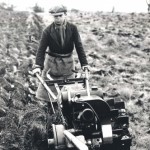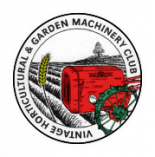Forum Replies Created
-
AuthorPosts
-
May 12, 2014 at 3:37 pm #8012
 trusty220Keymaster
trusty220KeymasterThe first picture with the writing on looks like the wire should go to a kill switch that is activated by the throttle arm. They usually have a four position throttle that goes from Choke> Fast Idle> Tick over> Stop.
The wire should be live whilst the engine is running and it is earthed out by the throttle lever when the lever reaches the end of it’s travel. It should be fitted through the hole in the plate shown on your photo- first you push the plate away from you so that the bit with the hole in comes through the slot in the plate, you then pass the end of the wire through the hole and release the plate and it should grip the wire.
You must make sure that the assembly is electrically isolated from the rest of the engine, otherwise you won’t get a spark. To test for a spark you can disconnect the wire and put some tape over the exposed end; that will rule out the stop wire or it’s mounting.May 5, 2014 at 5:55 pm #7890 trusty220Keymaster
trusty220KeymasterThe webs on the castings are always there on the later type of reduction gears. I think they are slightly different in shape on the early type.
May 5, 2014 at 8:21 am #7882 trusty220Keymaster
trusty220KeymasterIt could even be mid-eighties. I think the push Panther had a long production run and I certainly remember our workshops putting a few together for the showroom- I started in the workshop in 1985, so it could be after that.
Very nice all the same with an original grassbox and no dents. The usual damage would be that the grassbox gets pushed into the rockery on a regular basis!May 5, 2014 at 8:10 am #7878 trusty220Keymaster
trusty220KeymasterI see that you’ve managed to work out how to load the pictures on the forum- well done, it’s always great to welcome another user on here.
It looks like the early type of Earthquake that you don’t see much of these days. If anyone doesn’t know the difference then here are two pictures of the early and late types.
I’m sorry about the picture quality, but they are original brochures and the pictures are printed like newspaper with a series of dots. When they are reduced by Shrinkpic to fit on here they don’t seem to like the lower resolution. You can see the general idea, though, one is taller and shorter whereas the later one is longer with a lower centre of gravity.May 4, 2014 at 12:40 pm #7850 trusty220Keymaster
trusty220KeymasterProbably a Sat Nav error. Nobody seems to read maps these days only us older ones!
May 3, 2014 at 3:23 pm #7818 trusty220Keymaster
trusty220KeymasterSome more pictures for you. The ones of the long throttle rod aren’t the best, but you can just make out that there is a dog-leg in the end of the long rod after it comes through the air cowling. There is a loop on the cross-rod that fits closely around this, and another loop on the other end that works the throttle on the carburettor. There is also a slight offset to avoid contact with the magneto.
Good luck with it.May 1, 2014 at 6:55 pm #7775 trusty220Keymaster
trusty220KeymasterYou can buy new clutch springs from Adrian Marshall; I will send you a private message with his details.
May 1, 2014 at 6:17 pm #7774 trusty220Keymaster
trusty220KeymasterThe throttle has a sprung action when in use, but this is created by the throttle rod being slightly curved when it comes out of the handlebar tube and follows the straight side of the transmission box. As it turns the curve makes the pressure greater and it will spring back if released. It will also go over-centre if turned a full half-circle.
I’ll have a go at taking some more pictures of the right hand side this weekend for you.April 30, 2014 at 7:39 am #7748 trusty220Keymaster
trusty220KeymasterMine turned up yesterday in Worcestershire.
Well done, Alan and Charlie, different but the same old Cultivator and in colour as well! I like the full-page paragraphs on some of the pages, even though it makes your laying out more difficult it is easier to read.
Thanks again.April 29, 2014 at 6:43 pm #7739 trusty220Keymaster
trusty220KeymasterI apologise for not replying to the original thread, but I obviously didn’t see it at the time.
The twist grip is easy enough to replace; you have the main piece which is the handlebar with the slot in it. The parts that you are missing are the tube that fits around the handlebar to form the handgrip (part no. 2) and the steel plug at the end of the handlebar (part no. 15).
The throttle rod passes through the inside of the handlebar tube and through a close-fitting hole in the end plug (this plug is stepped and free to rotate inside the handlebar). There is a tapped hole in the side of this plug so that you can insert a screw to lock the plug and throttle rod together- this hole is positioned so that you can insert the screw through the semi-circular slot in the handlebar and into the plug. The screw will then act as your throttle limit so that you can only turn the throttle rod through a half-turn (180 degrees).
The handgrip tube will fit over this ( you have to remove the screw first ), then line up all of the holes and insert the screw; the screw’s length is critical because it will wind in until it bottoms out on the throttle rod, and you will find that you’ve probably got too much sticking out of the handgrip. Keep taking a little off the end of the screw until it all fits together nicely, then cover the handgrip tube with some car radiator hose. You can cut a hole in the hose to fit over the screw head and it all works well when it’s done!April 27, 2014 at 8:00 am #7696 trusty220Keymaster
trusty220KeymasterSorry for the delay, but I’ve been away for a week in Wales (and, yes, it was sunny!).
I would try Ransomes at Ipswich as a starting point, but don’t hold your breath. They used to have a couple of people there who used to specialise in Iseki products and they would go the extra mile to find things if at all possible, but they both took early retirement three or four years ago and there is nobody there now who has a knowledge of the history of the brand.
I’ll have a dig about and see if I can come up with any alternatives for you.April 13, 2014 at 5:27 pm #7468 trusty220Keymaster
trusty220KeymasterThe Monro records would be a good project to add to my Trusty registers. Now that you’ve seen the format I could do with a little piece about the brand or model, a picture or two and the listing of machines on an Excel spreadsheet. I’ll do the rest so that the format stays uniform for all of the machinery registers.
April 13, 2014 at 3:54 pm #7453 trusty220Keymaster
trusty220KeymasterOnly one, and it belongs to me!
Thanks for the kind words, Andy. What you don’t see is that I’ve been struggling with it every night this week and had a shedload of help from Alan Newbould to sort it out. It’s really Alan that needs the thanks for putting up with me and my problems! Let’s hope they are all behind us now!April 8, 2014 at 6:50 pm #7245 trusty220Keymaster
trusty220KeymasterThe machine that you speak of is still in existence and is on the Trusty Register. It was sold to a dealer called L. Thornley on 30th April, 1951, and is fitted with a Norton engine.
March 17, 2014 at 4:23 pm #6519 trusty220Keymaster
trusty220KeymasterIt looks like the rod on the right hand side is sticking out further than normal- it only needs to be an extra 1/4″ each side to allow for the thickness of the metal post and it’s cross brace- so it’s possible that it was fitted with one at some time.
I’ve never seen the bumper bars in any other position than horizontal before. Is it possible that someone may have bent the support where it meets the chassis? -
AuthorPosts









